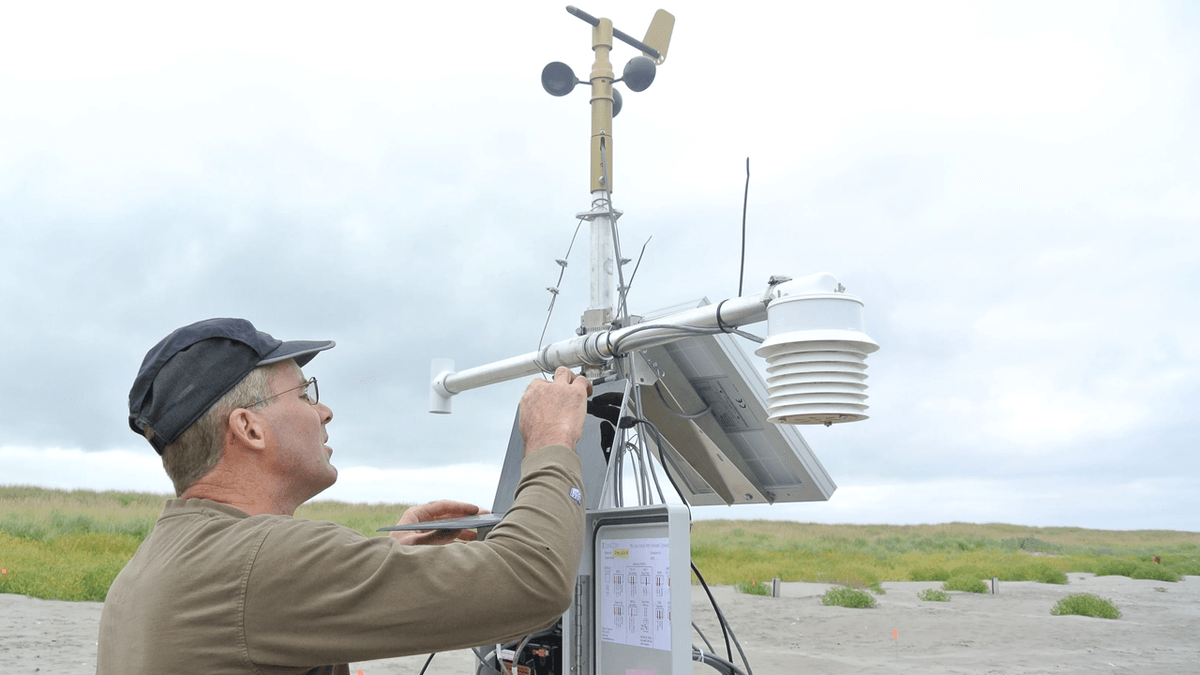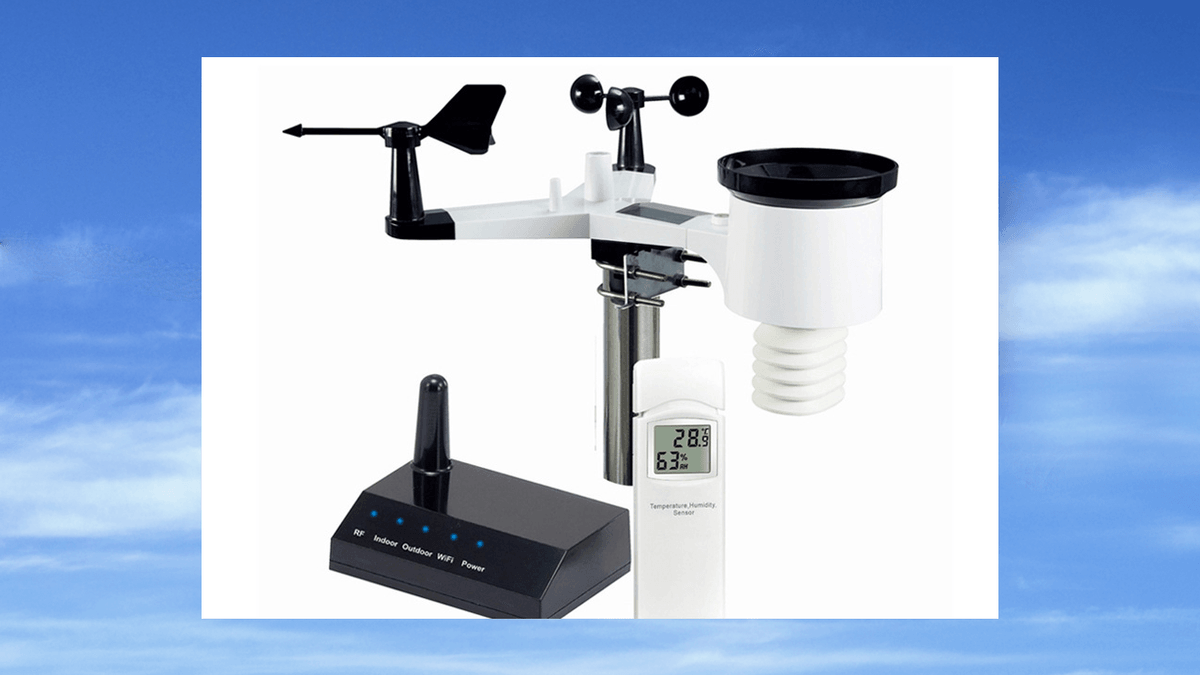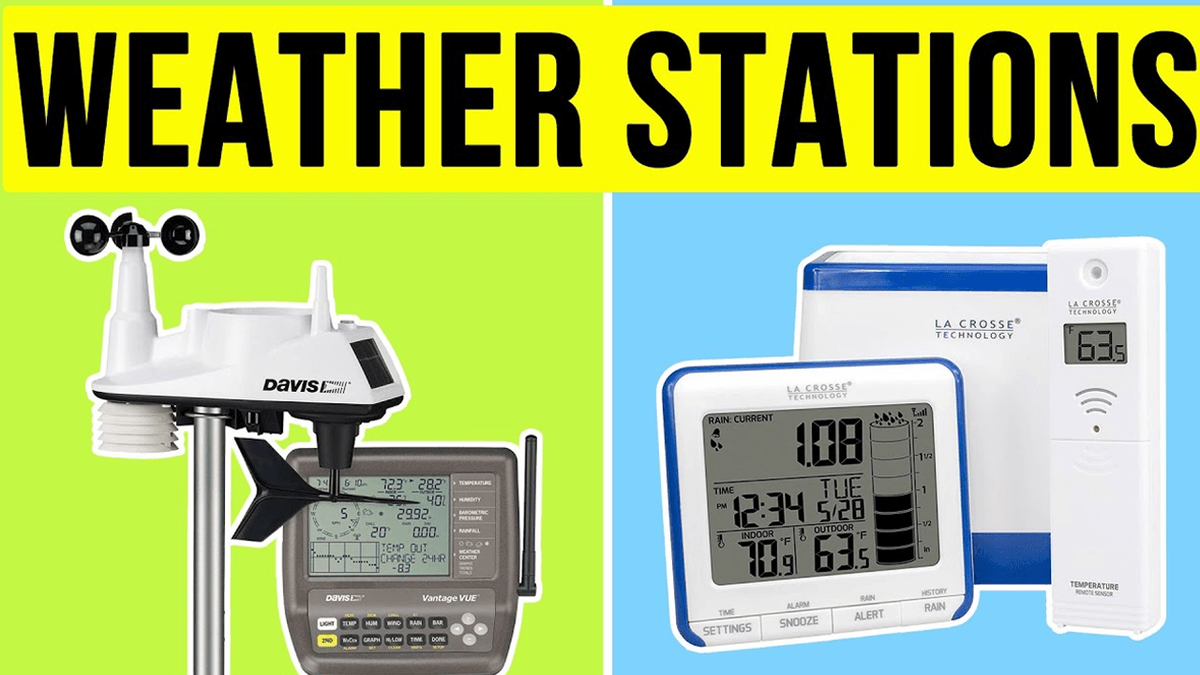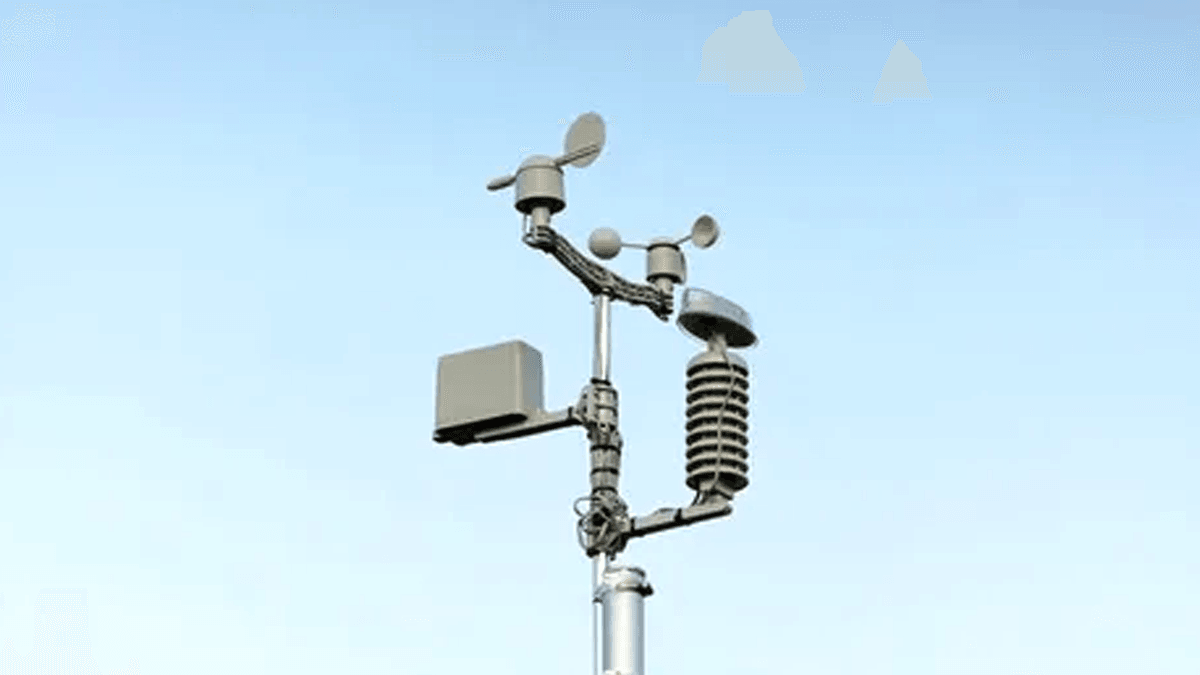An airport weather station is the cornerstone of safe and efficient air travel, delivering real-time meteorological data that guides every flight decision. From tracking wind speeds to detecting sudden storms, an airport weather station provides the insights pilots, air traffic controllers, and airport operators need to keep operations running smoothly. In an industry where seconds matter and weather can shift in an instant, the airport weather station is more than a piece of equipment—it’s a lifeline. This comprehensive guide explores everything about the airport weather station: how it works, its key components, why it’s essential, and how to choose the right system for your airport. Whether you’re managing a busy international hub or a small regional airstrip, understanding the airport weather station is vital to ensuring aviation safety and reliability.
What Is an Airport Weather Station?
An airport weather station is a specialized system designed to monitor and report weather conditions specific to an airport’s environment. Unlike general weather stations used for civilian forecasts, an airport weather station is engineered to capture data critical to aviation, such as wind shear, runway visibility, and cloud height—factors that directly impact takeoffs, landings, and flight routes. The primary goal of an airport weather station is to provide accurate, timely, and actionable weather information to ensure safe flight operations.
Core Purpose of an Airport Weather Station
At its heart, an airport weather station exists to mitigate weather-related risks in aviation. Every year, weather causes thousands of flight delays, cancellations, and even accidents. An airport weather station reduces these risks by:
- Alerting pilots to hazardous conditions like sudden crosswinds or microbursts.
- Informing air traffic controllers when to delay or reroute flights.
- Helping airport crews prepare for inclement weather (e.g., deploying snowplows when snowfall is imminent).
- Ensuring compliance with international aviation regulations, which mandate specific weather monitoring standards.
How an Airport Weather Station Differs from Standard Weather Stations
While both track temperature and precipitation, an airport weather station is far more specialized:
- Aviation-Specific Metrics: It measures parameters like ceiling height (the lowest altitude of cloud cover), visibility, and wind shear—data irrelevant to general weather forecasting but critical for flights.
- Higher Precision: An airport weather station must meet strict accuracy standards (e.g., wind speed measurements within ±1 knot) to ensure safe decision-making.
- Real-Time Updates: Data from an airport weather station is transmitted continuously, often every 60 seconds or less, to keep pace with rapidly changing conditions.
- Integration with Aviation Systems: It feeds data directly into cockpit displays, air traffic control systems, and flight management software, ensuring seamless access to critical information.
In short, a standard weather station tells you if it’s raining. An airport weather station tells you if that rain is heavy enough to obscure the runway, how fast the wind is blowing across the tarmac, and whether a storm is approaching that could disrupt takeoffs.

Key Components of an Airport Weather Station
An airport weather station is a network of interconnected tools, each designed to measure specific weather parameters. Together, these components create a comprehensive picture of current and emerging conditions. Let’s break down the essential parts of an airport weather station.
Sensors: The Eyes and Ears of the Airport Weather Station
Sensors are the foundation of any airport weather station, capturing raw data from the environment. Here are the most critical sensors:
- Anemometers: Measure wind speed and direction, vital for determining if a plane can take off or land safely. An airport weather station typically uses ultrasonic anemometers, which are more accurate than traditional cup-and-vane models and work in all weather conditions.
- Thermometers and Hygrometers: Track air temperature and humidity. Extreme temperatures can affect aircraft performance (e.g., hot air reduces lift), while high humidity increases the risk of fog or icing.
- Barometers: Monitor atmospheric pressure. Rapid pressure changes often signal approaching storms, making this a key early-warning tool for the airport weather station.
- Precipitation Sensors: Detect rain, snow, sleet, or hail, along with intensity. Optical sensors are common in modern airport weather stations, as they can distinguish between precipitation types and measure accumulation.
- Ceilometers: Measure cloud height (ceiling) by sending laser pulses into the sky and timing their return. Low ceilings can ground flights, making this sensor critical for an airport weather station.
- Visibility Sensors: Determine how far objects (like runway lights or other aircraft) are visible. Forward-scatter sensors, which measure light scattered by fog, dust, or rain, are standard in airport weather stations to assess runway visual range (RVR).
Data Logger: The Brain of the Airport Weather Station
The data logger collects, processes, and stores information from all sensors in the airport weather station. It converts raw measurements (e.g., voltage from a thermometer) into usable data (e.g., 15°C) and checks for inconsistencies or errors. Advanced data loggers in modern airport weather stations can:
- Average readings over time to reduce noise (e.g., smoothing out temporary wind gusts).
- Flag anomalies (e.g., a sudden 10-knot wind shift) for immediate attention.
- Store historical data for trend analysis (e.g., identifying seasonal weather patterns at the airport).
Communication System: Sharing Data from the Airport Weather Station
An airport weather station is only useful if its data reaches the right people. Communication systems in airport weather stations include:
- Wired Connections: Direct links to air traffic control towers, airport operations centers, and flight dispatch systems.
- Wireless Transmitters: Cellular or satellite links for remote airports, ensuring data reaches central systems even in isolated locations.
- Aviation Weather Networks: Integration with global systems like the World Meteorological Organization’s (WMO) Aerodrome Meteorological Information Service (AMIS), allowing pilots worldwide to access the airport’s weather data.

Power Supply: Keeping the Airport Weather Station Running
Reliable power is non-negotiable for an airport weather station, as even a brief outage could leave operators blind to dangerous conditions. Most systems use:
- Primary Electrical Grid: For continuous power in urban airports.
- Backup Generators: To take over during blackouts, ensuring the airport weather station remains operational.
- Solar Panels with Batteries: A sustainable option for remote airports, providing power in areas with unreliable grid access.
Enclosures and Protection: Shielding the Airport Weather Station
Airport weather stations operate in harsh environments—from freezing winters to scorching summers, and from driving rain to blowing sand. Protective enclosures:
- Shield sensors from direct sunlight (which can skew temperature readings).
- Prevent water damage with waterproof seals and drainage systems.
- Deter wildlife and vandalism, ensuring sensors remain unobstructed.
How an Airport Weather Station Works: From Data to Decision
The airport weather station is a dynamic system that turns raw environmental data into critical insights. Here’s a step-by-step look at its workflow, from measurement to action.
Step 1: Data Collection
Sensors in the airport weather station continuously monitor their target parameters. For example:
- An anemometer spins to measure wind speed, while a wind vane (or ultrasonic sensors) tracks direction.
- A ceilometer fires 50 laser pulses per second to determine cloud height.
- A visibility sensor emits infrared light and measures how much is scattered by particles in the air.
This data is collected in real time, often at intervals of 1–10 seconds, to capture rapid changes like sudden wind shifts.
Step 2: Data Processing
The data logger in the airport weather station takes raw sensor inputs and refines them:
- It converts units (e.g., millivolts from a pressure sensor to hectopascals).
- It cross-references readings to detect errors (e.g., if a thermometer reports 30°C but a hygrometer shows 90% humidity, it may flag a potential issue).
- It calculates derived metrics, such as wind chill or heat index, which affect aircraft and crew comfort.
For example, if an airport weather station measures a wind speed of 15 knots and a temperature of -5°C, the data logger can compute the wind chill factor, alerting ground crews to icy conditions on the runway.
Step 3: Data Distribution
Processed data from the airport weather station is distributed to key stakeholders:
- Air Traffic Controllers: Receive real-time feeds on wind, visibility, and precipitation to approve or delay takeoffs/landings.
- Pilots: Access data via in-cockpit displays or pre-flight briefings, using it to plan routes and approach speeds.
- Airport Operations: Use forecasts (based on historical airport weather station data) to deploy resources like de-icing trucks or snowplows.
- Aviation Authorities: Collect data from airport weather stations to enforce safety regulations and improve national weather models.
Step 4: Actionable Alerts
The airport weather station is programmed to issue alerts when conditions exceed safe thresholds. Examples include:
- A wind shear alert if wind speed changes by 15 knots or more over 1000 feet.
- A fog alert if visibility drops below 1 mile.
- A thunderstorm alert if lightning is detected within 10 miles of the airport.
These alerts trigger immediate responses: controllers may halt takeoffs, pilots may divert to alternate airports, and ground crews may prepare for inclement weather.
Step 5: Historical Analysis
Over time, data from the airport weather station is stored and analyzed to:
- Identify seasonal patterns (e.g., foggy mornings in autumn).
- Validate sensor accuracy (e.g., comparing rainfall totals to nearby stations).
- Improve forecasting models, making future predictions more reliable.
For example, an airport with a 10-year history of airport weather station data can better anticipate winter storms, allowing for proactive scheduling of de-icing crews.
Why Every Airport Needs a Reliable Airport Weather Station
The importance of an airport weather station cannot be overstated. It impacts safety, efficiency, compliance, and even profitability. Here’s why it’s non-negotiable for aviation operations.
Safety: Preventing Weather-Related Accidents
Weather is a leading cause of aviation accidents, but a robust airport weather station significantly reduces this risk. For example:
- Wind Shear Detection: Microbursts (sudden downward wind bursts) have caused fatal crashes, but modern airport weather stations with Doppler radar can detect them 5–10 minutes in advance, giving pilots time to abort landings.
- Icing Alerts: Aircraft icing can destroy lift, but an airport weather station tracks temperature and humidity to predict icing conditions, prompting de-icing procedures before takeoff.
- Low Visibility Warnings: Fog or heavy rain can obscure runways, but an airport weather station’s visibility sensors alert controllers to close runways until conditions improve, preventing collisions.
The National Transportation Safety Board (NTSB) estimates that reliable airport weather stations have reduced weather-related accidents by 40% in the last decade.

Efficiency: Reducing Delays and Costs
Weather delays cost airlines and airports billions annually, but an airport weather station helps minimize these losses:
- Accurate Forecasting: By analyzing trends in airport weather station data, airports can predict storms and adjust schedules proactively (e.g., moving flights to avoid a 2-hour rain window).
- Optimal Resource Allocation: Knowing snowfall intensity from the airport weather station allows managers to deploy exactly the number of plows needed, avoiding overstaffing or delays in clearing runways.
- Fuel Savings: Pilots use wind data from the airport weather station to plan more efficient routes (e.g., flying with tailwinds), reducing fuel consumption and emissions.
A major U.S. airport reported saving $3 million annually after upgrading its airport weather station, thanks to fewer delays and optimized fuel use.
Compliance: Meeting Global Aviation Standards
International regulations mandate specific weather monitoring for airports. For example:
- The International Civil Aviation Organization (ICAO) requires airports serving commercial flights to measure visibility, wind, temperature, and cloud height—all tracked by an airport weather station.
- The Federal Aviation Administration (FAA) mandates that airport weather stations meet strict accuracy standards (e.g., wind direction within ±5 degrees) and update data at least once per minute.
Failure to comply can result in fines, operational restrictions, or even the loss of flight certifications. A reliable airport weather station ensures airports meet these standards without exception.
Reputation: Building Trust with Airlines and Passengers
Airlines prefer airports with reliable weather data, as it reduces the risk of costly disruptions. Passengers, too, value on-time flights, and an airport weather station helps deliver that consistency. Airports with a reputation for accurate weather monitoring attract more carriers and passengers, boosting revenue and growth.
Types of Airport Weather Stations: Choosing the Right System
Not all airport weather stations are the same. The right system depends on an airport’s size, traffic volume, and weather challenges. Here are the main types, along with their use cases.
Automated Surface Observing System (ASOS): The Workhorse
ASOS is the most common airport weather station in commercial aviation, used by thousands of airports worldwide. Developed by the FAA, NOAA, and DOD, it’s designed for medium to large airports and measures:
- Wind speed/direction
- Temperature and humidity
- Pressure
- Precipitation type and intensity
- Visibility and ceiling height
ASOS is fully automated, operating 24/7 with minimal human intervention. It’s ideal for airports with high traffic volumes, as it provides continuous data to support frequent takeoffs and landings.
Automated Weather Observing System (AWOS): Flexible and Scalable
AWOS is a more flexible airport weather station, available in several models (AWOS-A, AWOS-B, etc.) with varying sensor packages. Key features:
- Customizable to an airport’s needs (e.g., a small airport might opt for a basic AWOS that measures only wind and temperature).
- More affordable than ASOS, making it popular for regional airstrips and general aviation airports.
- Can be upgraded with additional sensors (e.g., adding a ceilometer as traffic grows).
AWOS is often used at airports with 50–500 daily flights, balancing cost and functionality.
Portable Airport Weather Stations: For Temporary or Remote Use
Portable systems are compact, battery-powered airport weather stations designed for:
- Temporary operations (e.g., construction sites for new runways).
- Remote airstrips with limited infrastructure.
- Emergency response (e.g., monitoring weather during disaster relief flights).
They typically measure wind, temperature, and precipitation and transmit data via satellite. While less comprehensive than ASOS or AWOS, they provide critical data in locations where permanent systems aren’t feasible.
Advanced Airport Weather Stations with Radar Integration
Large international airports (e.g., London Heathrow, Dubai International) use advanced systems that combine standard sensors with Doppler radar. These airport weather stations can:
- Detect storms up to 100 miles away.
- Track wind shear in real time.
- Predict precipitation intensity 30–60 minutes in advance.
Radar-integrated airport weather stations are costly but essential for hubs with high traffic and complex weather patterns (e.g., frequent thunderstorms or fog).
Installing an Airport Weather Station: Key Considerations
Installing an airport weather station requires careful planning to ensure accuracy and reliability. Here’s what to consider before deployment.
Location: Where to Place the Airport Weather Station
Sensor placement directly impacts data accuracy. For an airport weather station:
- Wind Sensors: Should be mounted 10 meters (33 feet) above the ground, free from obstructions like buildings or trees that could block wind flow.
- Visibility Sensors: Must be positioned near the runway to reflect actual landing conditions, not just general airport visibility.
- Temperature/Humidity Sensors: Should be shaded to avoid direct sunlight, which can artificially raise temperature readings. A Stevenson screen (a louvered box) is standard for this.
- All Sensors: Should be placed away from heat sources (e.g., runway lights) or exhaust vents, which can skew readings.
Airport weather station manufacturers often provide detailed placement guides to ensure optimal performance.
Calibration: Ensuring Accuracy
Even the best sensors drift over time, so calibration is critical. An airport weather station should be calibrated:
- Before installation: To ensure sensors meet manufacturer specifications.
- Annually: By certified technicians using traceable standards (e.g., a reference thermometer calibrated to national standards).
- After extreme weather: Storms, lightning strikes, or heavy snow can damage sensors, requiring re-calibration.
Proper calibration ensures the airport weather station’s data remains trustworthy—off by even 2 knots in wind speed can affect flight decisions.
Integration with Existing Systems
An airport weather station must work seamlessly with other airport tools:
- Air Traffic Control Systems: Data should feed directly into tower displays, allowing controllers to see weather and flight information side by side.
- Flight Management Software: Pilots use this software to plan routes, so integrating airport weather station data ensures they have the latest conditions.
- Alarm Systems: Alerts from the airport weather station should trigger notifications in operations centers (e.g., flashing lights, email alerts) to ensure quick responses.
Manufacturers like Haisen offer airport weather stations with open APIs, making integration with third-party systems straightforward.
Power and Connectivity
Remote or off-grid airports need reliable power and communication:
- Solar Power: For sunny regions, solar panels with battery storage can power an airport weather station indefinitely.
- Satellite Communication: In areas with no cellular coverage, satellite links ensure data reaches central systems.
- Redundancy: Critical airports should have backup power and communication (e.g., a secondary cellular network) to prevent data loss during outages.

Maintaining an Airport Weather Station: Tips for Long-Term Reliability
An airport weather station is a long-term investment, and proper maintenance ensures it delivers accurate data for years. Here’s a maintenance checklist.
Daily Checks
- Visual Inspection: Look for sensor damage (e.g., a bent anemometer) or obstructions (e.g., bird nests in visibility sensors).
- Data Validation: Compare the airport weather station’s readings to nearby stations or manual observations. A 5°C temperature difference or 10-knot wind discrepancy may indicate a problem.
- Alert Testing: Trigger a test alert (e.g., a high wind warning) to ensure notifications reach the right staff.
Weekly Maintenance
- Clean Sensors: Wipe visibility and precipitation sensors to remove dust, pollen, or insect debris, which can block light and skew readings.
- Check Connections: Ensure cables between sensors and the data logger are secure—loose connections cause data gaps.
- Inspect Power Systems: Verify backup batteries are charged and generators are operational (test them monthly).
Monthly Tasks
- Calibrate Key Sensors: Use portable reference tools (e.g., a handheld anemometer) to check wind speed accuracy. Adjust or recalibrate if needed.
- Update Software: Install firmware updates for the data logger to fix bugs and improve performance.
- Clear Drainage Systems: Ensure water from rain or snow can drain from sensor enclosures, preventing flooding.
Annual Overhauls
- Replace Wear Items: Anemometer bearings, precipitation sensor filters, and battery backups have limited lifespans and should be replaced annually.
- Full System Calibration: Hire certified technicians to recalibrate all sensors using laboratory-grade equipment.
- Structural Inspection: Check mounting poles, enclosures, and wiring for corrosion or damage (especially in coastal airports with salt exposure).
Troubleshooting Common Issues
- Data Gaps: Often caused by power outages or communication failures. Check backups and reset modems if needed.
- Inconsistent Readings: May indicate sensor drift or obstructions. Clean sensors and recalibrate before replacing them.
- False Alerts: Usually due to sensor noise (e.g., a brief dust gust triggering a low-visibility alert). Adjust threshold settings or add filters in the data logger.
Future Trends in Airport Weather Station Technology
The airport weather station is evolving, driven by advances in sensors, connectivity, and artificial intelligence. Here’s what to expect in the coming years.
AI-Powered Forecasting
Modern airport weather stations are integrating machine learning to predict conditions with unprecedented accuracy. AI algorithms analyze historical data from the airport weather station to:
- Forecast fog formation 2–3 hours in advance (traditional models only predict 30–60 minutes).
- Predict wind shear events with 85% accuracy, up from 60% with current methods.
- Adjust sensor sensitivity in real time (e.g., increasing precipitation sensor resolution during heavy storms).
Airports testing AI-integrated systems report a 30% reduction in false alerts and more accurate forecasts.
IoT and Cloud Integration
The Internet of Things (IoT) is connecting airport weather stations to broader networks:
- Cloud Dashboards: Stakeholders can access real-time and historical data from anywhere via web or mobile apps, improving collaboration.
- Sensor Networks: Multiple mini-sensors placed around the airport (e.g., on runway edges) feed data to a central airport weather station, providing hyper-local insights (e.g., wind variations along a 10,000-foot runway).
- Automated Responses: IoT-enabled airport weather stations can trigger actions like turning on runway lights when visibility drops or activating de-icing systems when temperatures fall below freezing.
Eco-Friendly Designs
Sustainability is a growing focus, with new airport weather stations featuring:
- Solar-powered sensors with long-life batteries (reducing reliance on grid electricity).
- Recyclable materials in enclosures and mounting hardware.
- Low-energy sensors that consume 50% less power than traditional models, extending battery life in remote locations.
Enhanced Radar and Lidar
Next-generation airport weather stations are adding advanced radar and lidar (light detection and ranging) to:
- Detect clear-air turbulence, which is invisible to traditional sensors but dangerous for flights.
- Measure ice thickness on runways in real time, improving de-icing efficiency.
- Track drone activity near airports, combining weather data with security monitoring.
Choosing the Right Airport Weather Station: A Buyer’s Guide
Selecting an airport weather station is a major decision. Use this guide to find a system that meets your needs and budget.
Assess Your Airport’s Needs
- Traffic Volume: A busy international airport needs a full ASOS or radar-integrated system, while a small airstrip may suffice with a basic AWOS.
- Weather Challenges: Airports in fog-prone areas need advanced visibility and ceilometer sensors; those in hurricane zones require robust wind shear detection.
- Regulatory Requirements: Ensure the system meets ICAO, FAA, or local aviation authority standards (look for certifications like ICAO Annex 3 compliance).
Evaluate Key Features
- Accuracy: Prioritize sensors with low error margins (e.g., ±0.5°C for temperature, ±1 knot for wind speed).
- Reliability: Look for systems with a proven track record (e.g., 99.9% uptime) and durable components (e.g., stainless steel enclosures).
- Scalability: Choose an airport weather station that can be upgraded (e.g., adding a radar later) as your airport grows.
- Support: Opt for manufacturers that offer 24/7 technical support, training, and maintenance services.
Compare Costs
- Initial Investment: ASOS systems cost \(100,000–\)300,000, while basic AWOS models start at \(20,000–\)50,000.
- Operating Costs: Include calibration, maintenance, and power/communication expenses (solar systems reduce long-term costs).
- Total Value: A slightly more expensive system with better accuracy and reliability may save money by reducing delays and accidents.
Trust Reputable Manufacturers
Brands like Haisen, Vaisala, and Campbell Scientific are trusted in aviation for their high-quality airport weather stations. Haisen, for example, offers:
- Customizable systems tailored to airport size and weather risks.
- ICAO/FAA-certified sensors with industry-leading accuracy.
- Global support, including installation, training, and 24/7 technical assistance.
Contact Us for Your Airport Weather Station Needs
Ready to upgrade or install an airport weather station? Our team of aviation weather experts is here to help. We’ll assess your airport’s unique requirements, recommend the perfect system, and guide you through installation, calibration, and maintenance.
With Haisen’s airport weather stations, you’ll get:
- Accurate, real-time data to keep flights safe.
- Compliance with global aviation regulations.
- Reduced delays and operational costs.
- Peace of mind knowing you’re using the most reliable weather monitoring technology.
Don’t let unpredictable weather put your operations at risk. Contact us today for a free consultation and quote. Your airport’s safety and efficiency depend on the right airport weather station—let us help you find it.
Airport weather station, —because when it comes to aviation, accurate weather data isn’t just a luxury. It’s a necessity.

